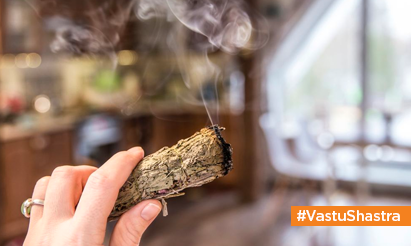Main Entrance Door Vastu Tips for Your Home
In the diverse tapestry of Indian culture, Vastu Shastra has been an integral part of architectural and interior design principles for centuries. The main entrance door, in particular, holds significant importance in Vastu, as it is considered the gateway through which energy flows into a home. In this article, we explore the main entrance door Vastu tips for homes and ponder whether investing effort in aligning with these principles is truly worth it.
The Significance of Vastu Shastra
Vastu Shastra, an ancient Indian science of architecture, emphasizes the harmonious balance of energies within a space. It is rooted in the belief that the energy within and around a home profoundly influences the well-being, prosperity, and happiness of its occupants. The main entrance door, being the primary point of entry for energy, is considered a crucial element in Vastu Shastra.
Vastu Tips for the Main Entrance Door
- Direction Matters: According to Vastu, the direction of the main entrance plays a pivotal role in determining the flow of energy. Ideally, the main entrance should face the north, east, or northeast direction to harness positive energy from the cosmic forces. These directions are believed to bring prosperity and good fortune to the household.
- Auspicious Colors: The color of the main entrance door is another critical factor in Vastu. Consider painting the door in auspicious colors such as red, green, or brown. These colors are believed to attract positive energy and create a welcoming atmosphere.
- Threshold Decor: Placing decorative items like auspicious symbols, traditional torans (door hangings), or religious symbols at the entrance can enhance the positive energy. However, it is crucial to ensure that these decorations are neat, well-maintained, and do not obstruct the doorway.
- Materials and Construction: Vastu recommends using solid and sturdy materials for the main entrance door. Wooden doors are preferred for their natural warmth and durability. Avoid creaky or damaged doors, as they are believed to obstruct the smooth flow of positive energy.
- No Obstructions: The path leading to the main entrance should be clear and unobstructed. Avoid placing obstacles such as shoes, clutter, or plants near the entrance, as they can disrupt the flow of positive energy into the home.
- Good Lighting: Adequate lighting at the entrance is essential for positive energy. Ensure that the entrance area is well-lit during the day, and consider installing a bright and welcoming light fixture. Avoid dim or flickering lights, as they are believed to attract negative energy.
- Door Size and Placement: The size of the main entrance door should be proportionate to the size of the house. It is generally recommended that the door be larger than the other doors in the house. Additionally, the door should be placed in a way that it opens in a clockwise direction to allow positive energy to flow smoothly.
- Avoid Broken or Rusty Hardware: Pay attention to the condition of the hardware on the main entrance door. Broken latches, rusty doorknobs, or squeaky hinges are considered inauspicious and should be repaired or replaced promptly.
Is It Worth the Effort?
Now that we’ve delved into the Vastu tips for the main entrance door, the question arises – is it worth the effort? Skeptics may dismiss Vastu Shastra as a set of ancient beliefs with no scientific basis, while proponents argue that the positive impact on energy and psychological well-being justifies the adherence to these principles.
- Psychological Impact: Regardless of one’s beliefs in cosmic energies, there’s a psychological aspect to consider. A well-maintained and aesthetically pleasing entrance can contribute to a positive and welcoming atmosphere. The colors, lighting, and decor recommended by Vastu align with general principles of creating a harmonious living space.
- Cultural Significance: For many Indians, Vastu Shastra is deeply ingrained in their cultural and spiritual beliefs. Following Vastu guidelines for the main entrance door may not only enhance the energy flow but also provide a sense of connection to tradition and culture.
- Home as a Haven: Home is a haven, a place of comfort and security. The effort put into aligning with Vastu principles can be seen as a symbolic gesture of creating a positive and nurturing environment. This, in turn, may positively influence the overall well-being of the occupants.
- Practical Considerations: Some Vastu recommendations, such as maintaining a clutter-free entrance or ensuring good lighting, have practical benefits that extend beyond Vastu principles. A clean and well-lit entrance is not only visually appealing but also contributes to the safety and functionality of the home.
In the rich mosaic of Indian culture, Vastu Shastra continues to be a guiding force in the design and construction of homes. While skeptics may question the scientific basis of Vastu principles, many find value in the psychological and cultural aspects of aligning with these guidelines.
The main entrance door, as the focal point for energy flow, holds a special place in Vastu. By incorporating simple tips such as choosing auspicious colors, maintaining cleanliness, and ensuring good lighting, homeowners can create a positive and welcoming atmosphere. Whether or not one believes in the cosmic energies, the effort put into following these Vastu tips can contribute to a harmonious and aesthetically pleasing living space.
In the end, the decision to adhere to Vastu principles for the main entrance door boils down to personal beliefs and cultural considerations. For those who find resonance in the age-old wisdom of Vastu Shastra, the effort may well be worth the enhanced sense of well-being and connection to tradition.




